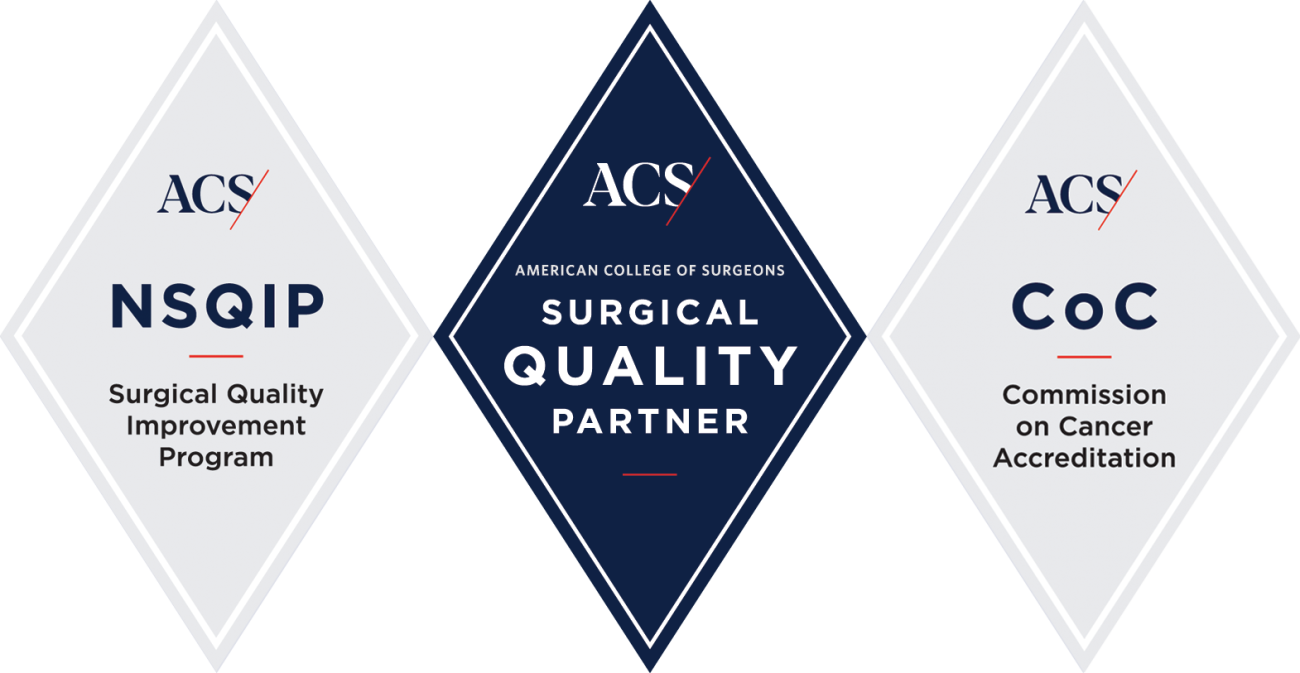Surgery is a primary treatment for lung cancer, with the goal of removing all of the cancer.
This usually means that the portion of your lung that contains the cancer is removed along with nearby lymph nodes. Our thoracic surgeons aim for lung-sparing surgery, leaving as much healthy lung tissue as possible. We use minimally invasive thoracoscopic approaches that allow patients to heal and recover faster, reduce risks, and better tolerate additional treatments such as chemotherapy.
Video-assisted thoracoscopic surgery (VATS)
This surgery offers a minimally invasive surgical alternative with many benefits for the patient. Nationally, only 20-30 percent of lung surgeries use the VATS approach, but at Roswell Park, the rate of using VATS is as high as 90 percent.
How VATS works
Our surgeons make three small incisions, or ports. A scope (thoracoscope) equipped with a camera is inserted through one port, providing an interior view of the chest, while surgical instruments are inserted through the other ports. In some cases, our thoracic surgeons are able to perform the operation with a uniportal approach, operating through just one port and a separate pinhole for the scope.
Previously, VATS was not performed in patients with scar tissue in the chest due to asbestos exposure, prior radiation or chemotherapy. By improving on existing technology, Roswell Park thoracic surgeons have overcome that obstacle.
Robot-assisted thoracoscopic surgery (RATS)
This surgery is a minimally invasive technique that is similar to VATS and uses small incisions or ports through which to operate. With robotic surgery however, the surgeon manipulates the robotic surgical tools from a nearby computer console.
How RATS works
Robot-assisted thoracic procedures are performed using the da Vinci® Surgical System. Instead of standing and operating over the patient, the surgeon sits at a special station and sees a 3-dimensional (3-D) view of the surgery. This special camera magnifies the image 10 times larger than normal. The tools of the robot are very small, but are more flexible and nimble than the surgeon’s fingers. This allows surgeons to complete complex surgeries using small incisions. Robot-assisted thoracic lung resections result in the same benefits as VATS procedures and may be preferred by some patients.
Benefits of minimally invasive lung surgery
Because the smaller incisions heal faster than large, traditional incisions, patients undergoing VATS or RATS typically enjoy these benefits:
- Shorter hospital stay. Inpatient stay is typically three to four days and fewer patients need nursing services or home health care afterward.
- Faster return to normal activities. Patients have no lifting restrictions and may go back to work very quickly. Patients are nearly normal in three to four weeks.
- Significantly less pain. Many patients don’t require any pain medication following surgery.
- A safer surgical option. Some patients, especially those who are older, frail and have other health problems, would not be eligible for traditional surgery.
- Reduced blood loss and the need for transfusion is rare.
Using these minimally invasive surgical approaches to lung cancer at Roswell Park patients may safely undergo:
- Lobectomy. A lobe of the lung is removed. Lobectomy is the most common surgery performed for the treatment of lung cancer.
- Segmentectomy. A segment of a lobe along with lymph nodes is removed, considered an ideal lung-sparing operation.
- Pneumonectomy. An entire lung is removed, typically for more advanced lung cancer cases.
- Wedge Resection. Only the tumor and a small part of the lung (without lymph nodes) is removed.
- Sleeve Lobectomy (or sleeve resection). A lung tumor in a lobe of the lung and a part of the main bronchus (airway) is removed. The ends of the bronchus are rejoined and any remaining lobes are reattached to the bronchus. This surgery is performed in order to save part of the lung.
Pancoast tumor surgery
A superior sulcus tumor, also commonly referred to as a Pancoast tumor, is a rare form of lung cancer that arises in the upper portion of a lung and interferes with the surrounding structures — the ribs, the lining of the chest cavity, the spine, nerves and blood vessels. Surgery for Pancoast tumors is a complex procedure that involves removing the upper lobe of the lung as well as any portion of the chest wall, or other involved structures.

